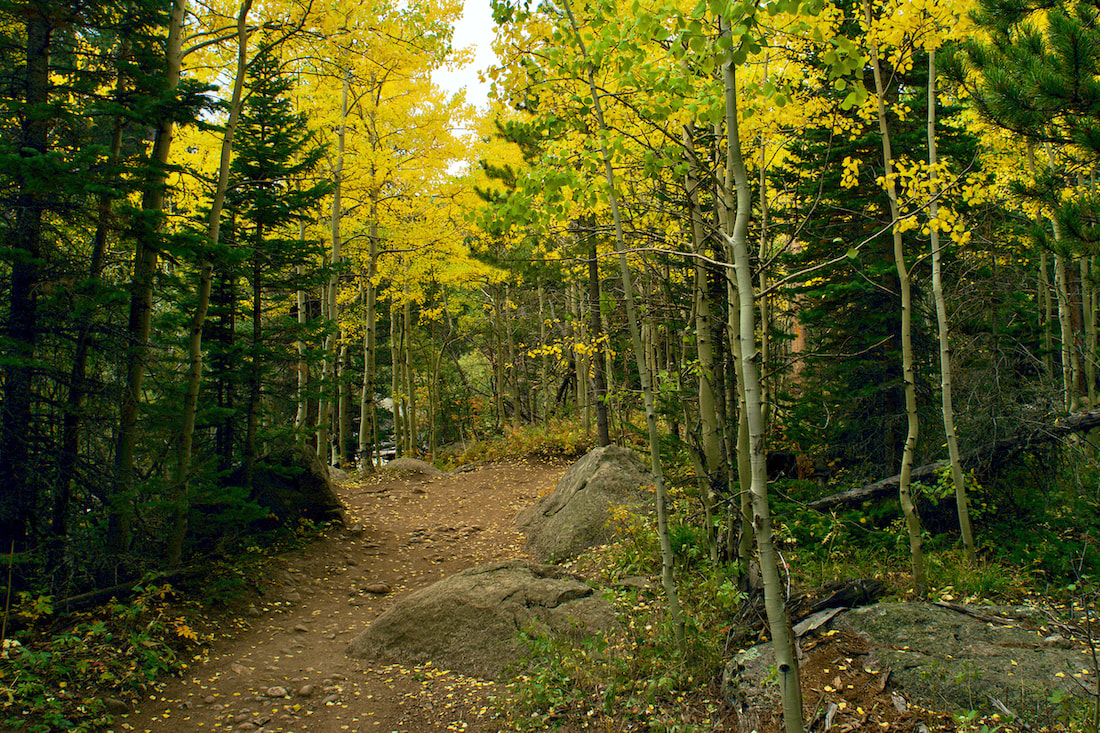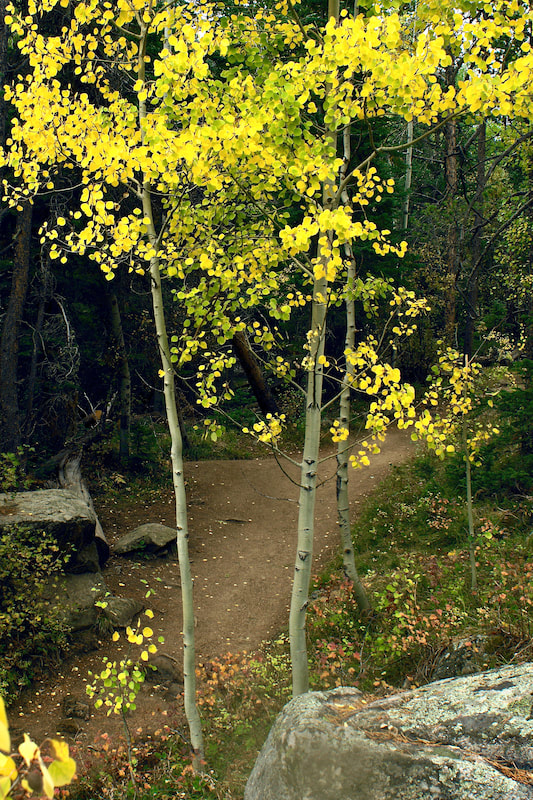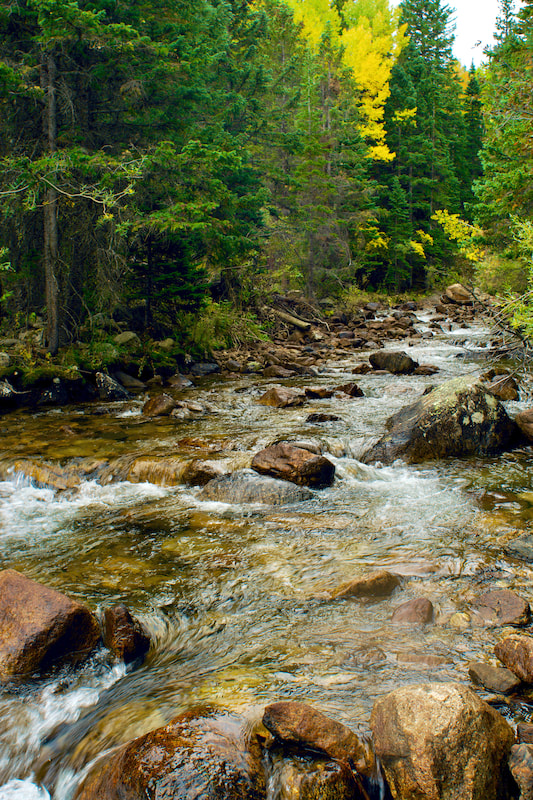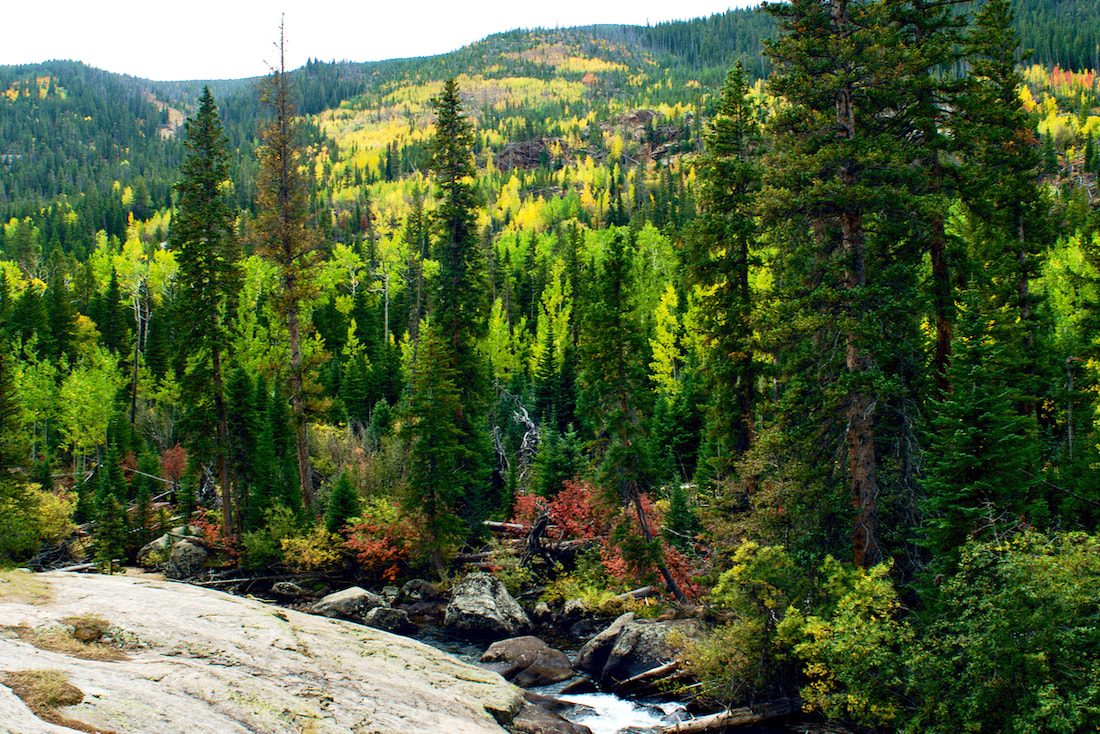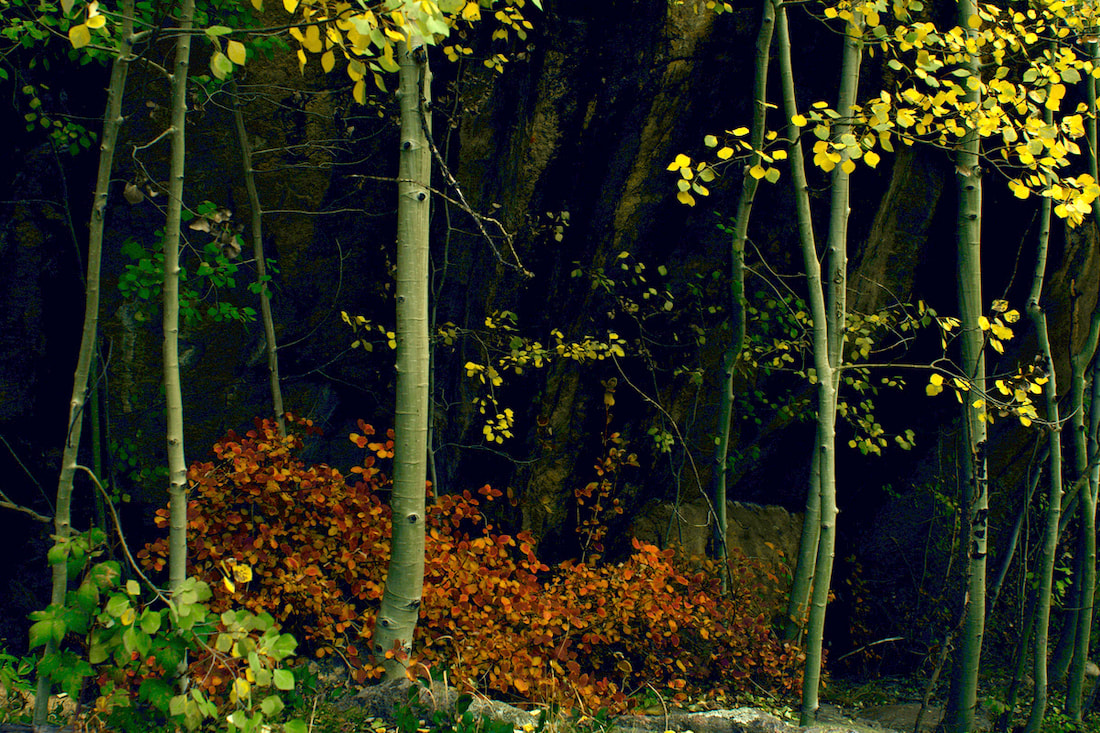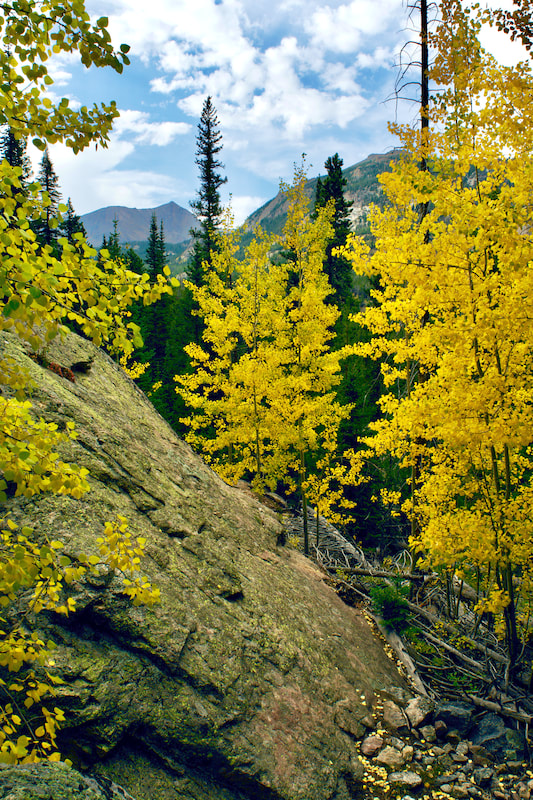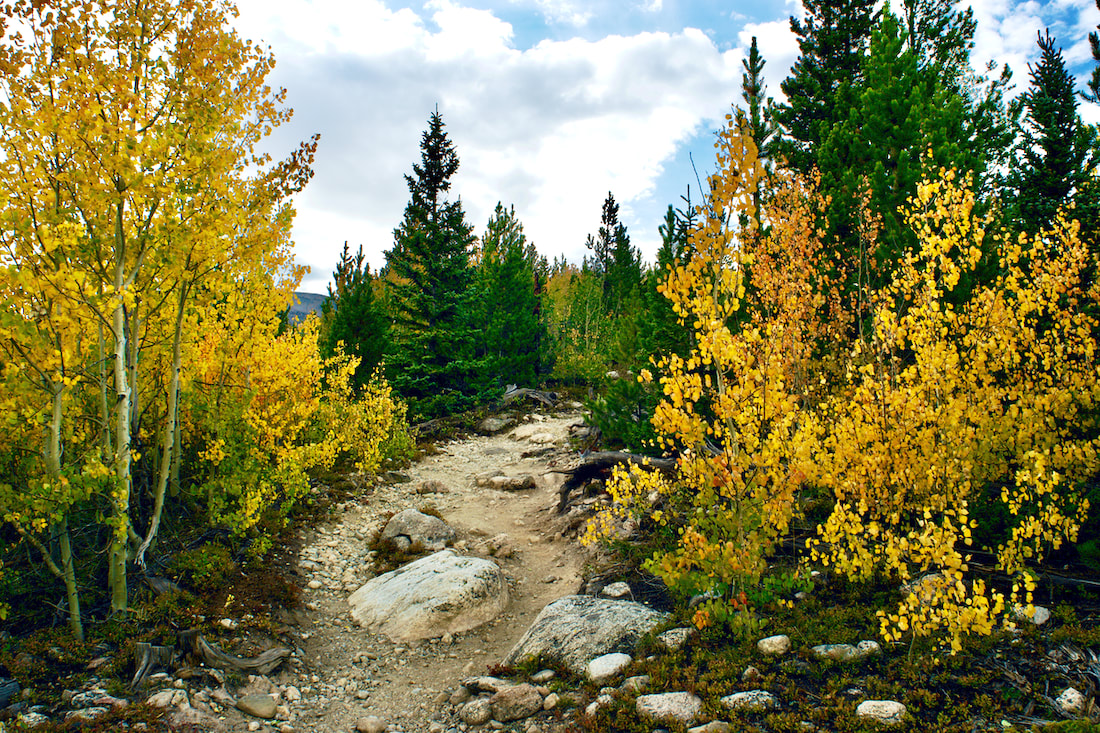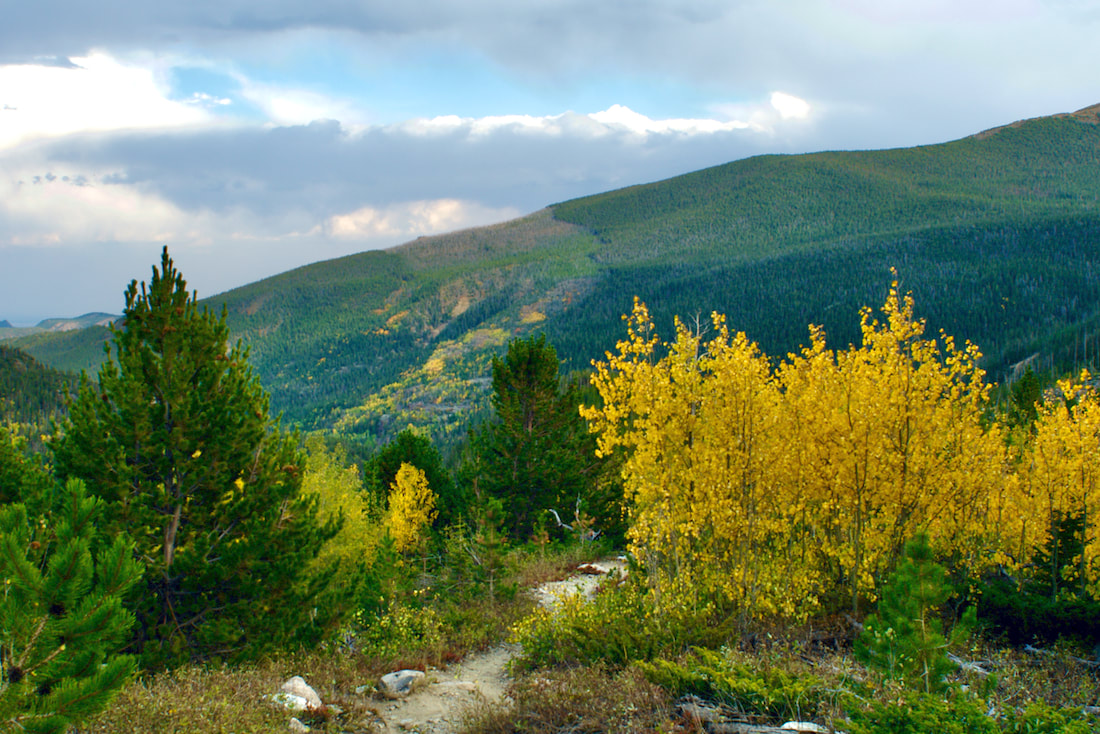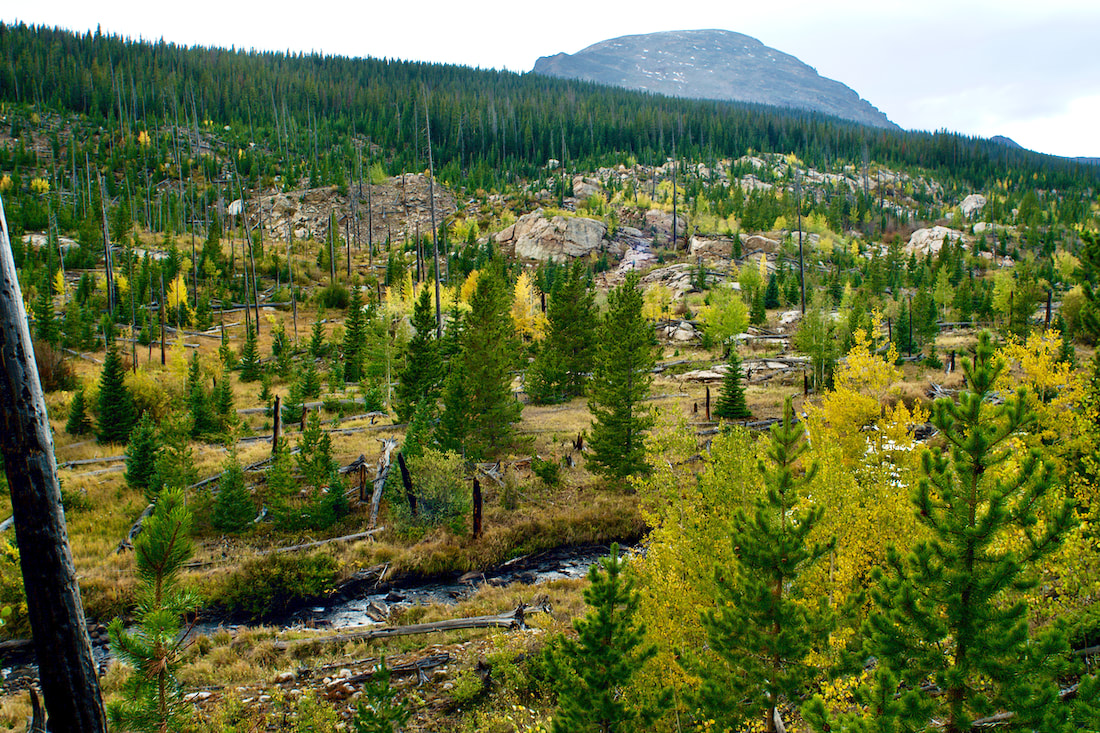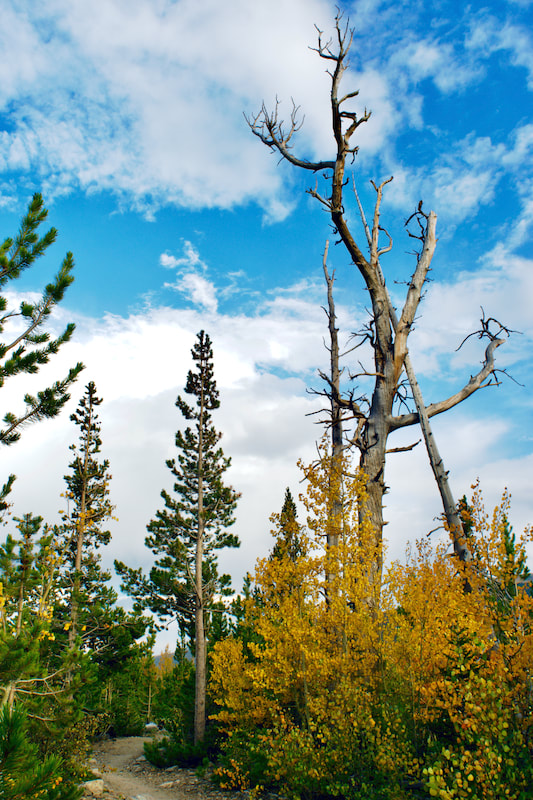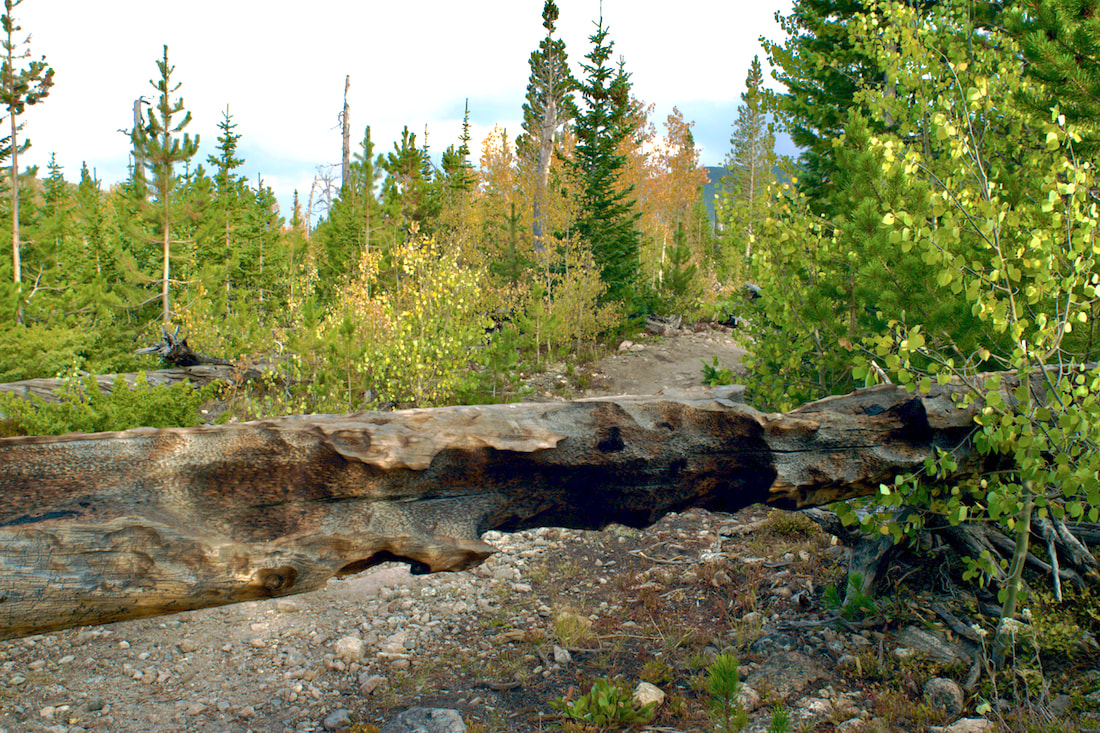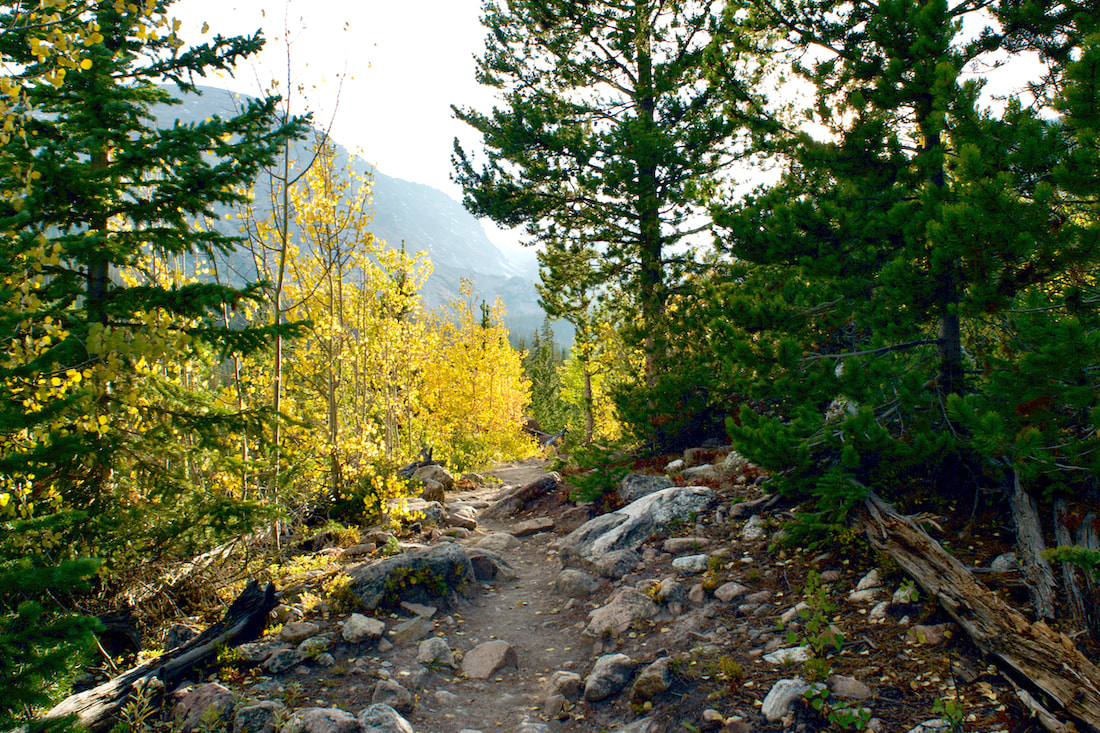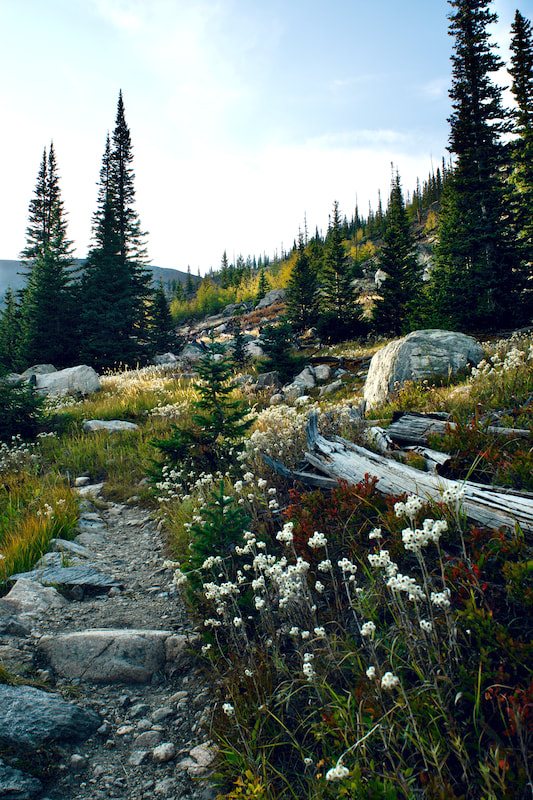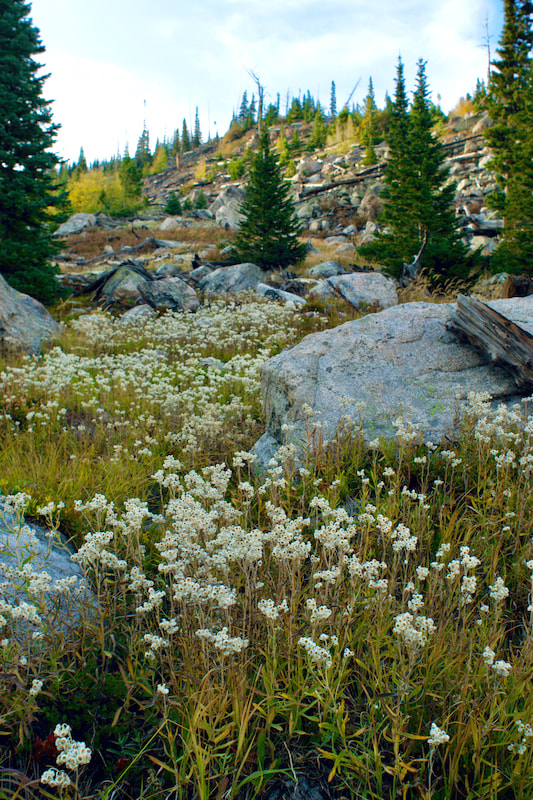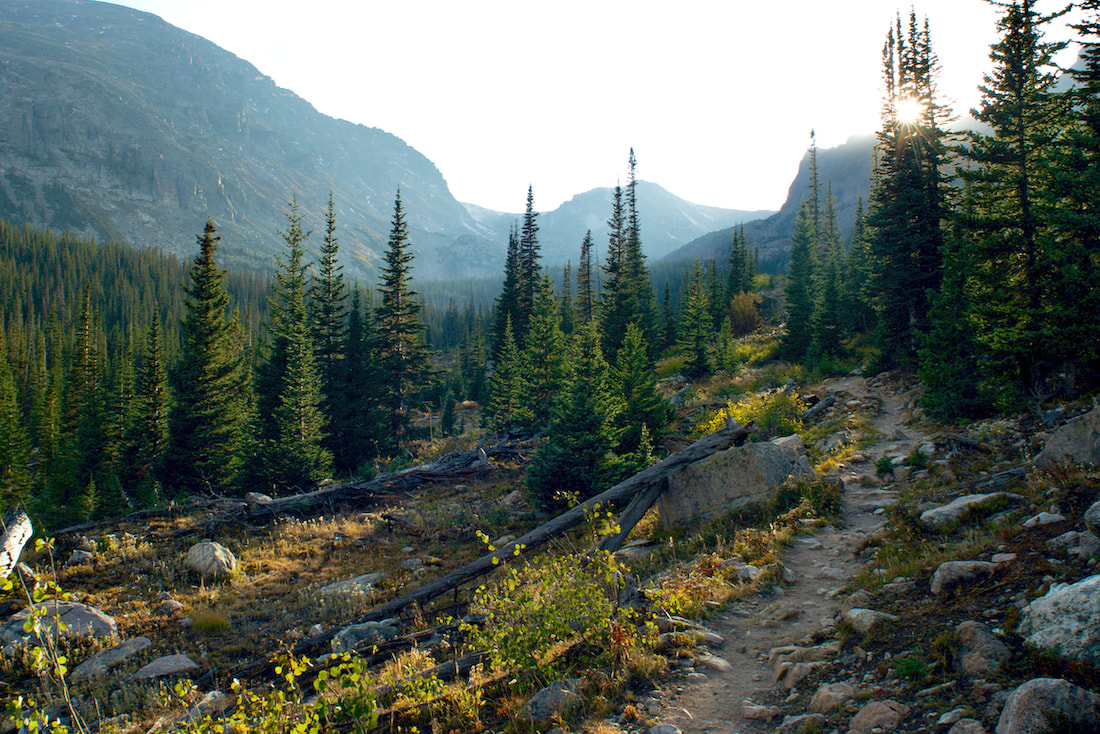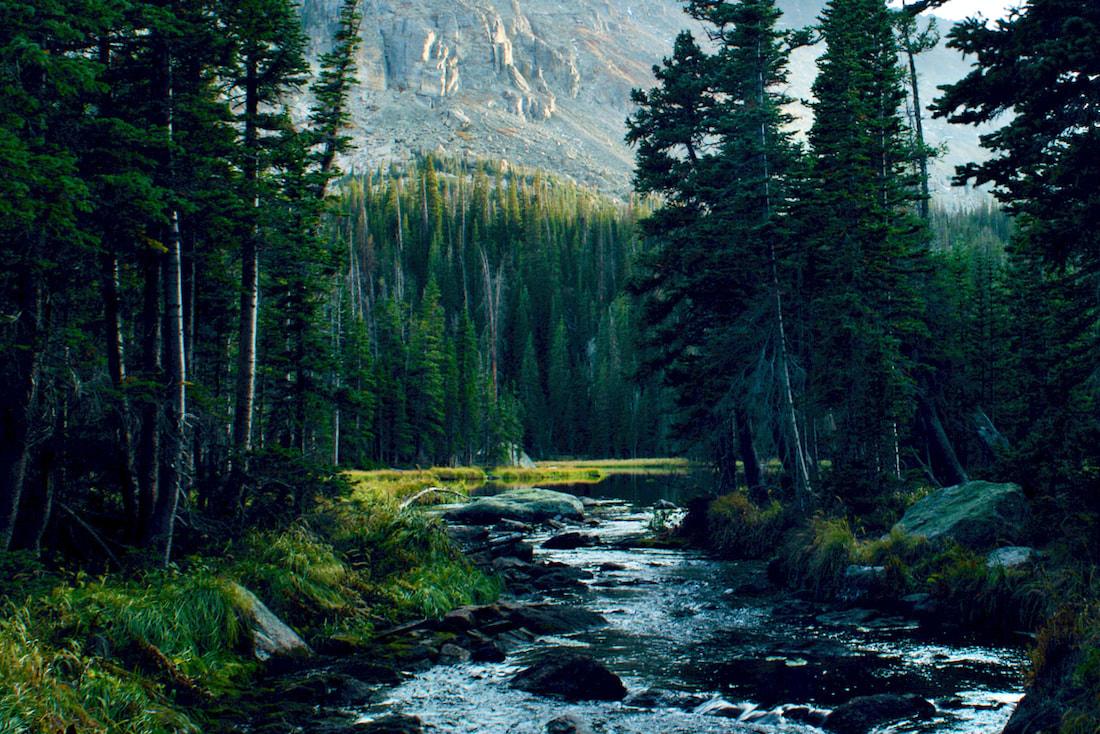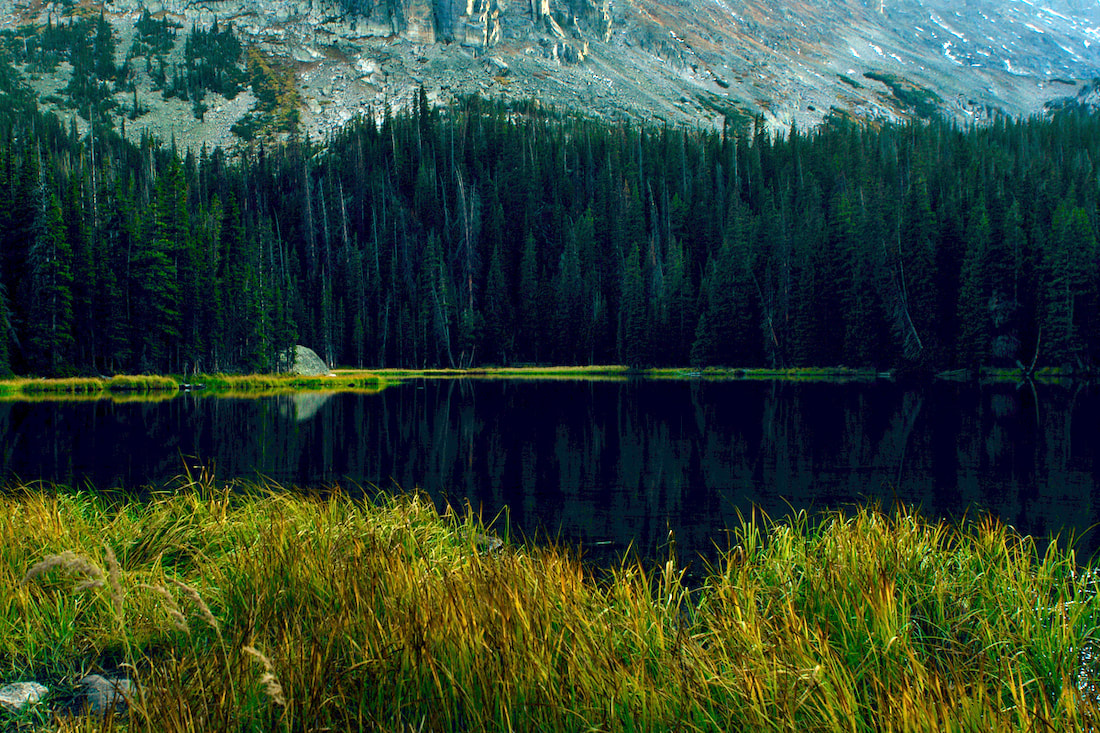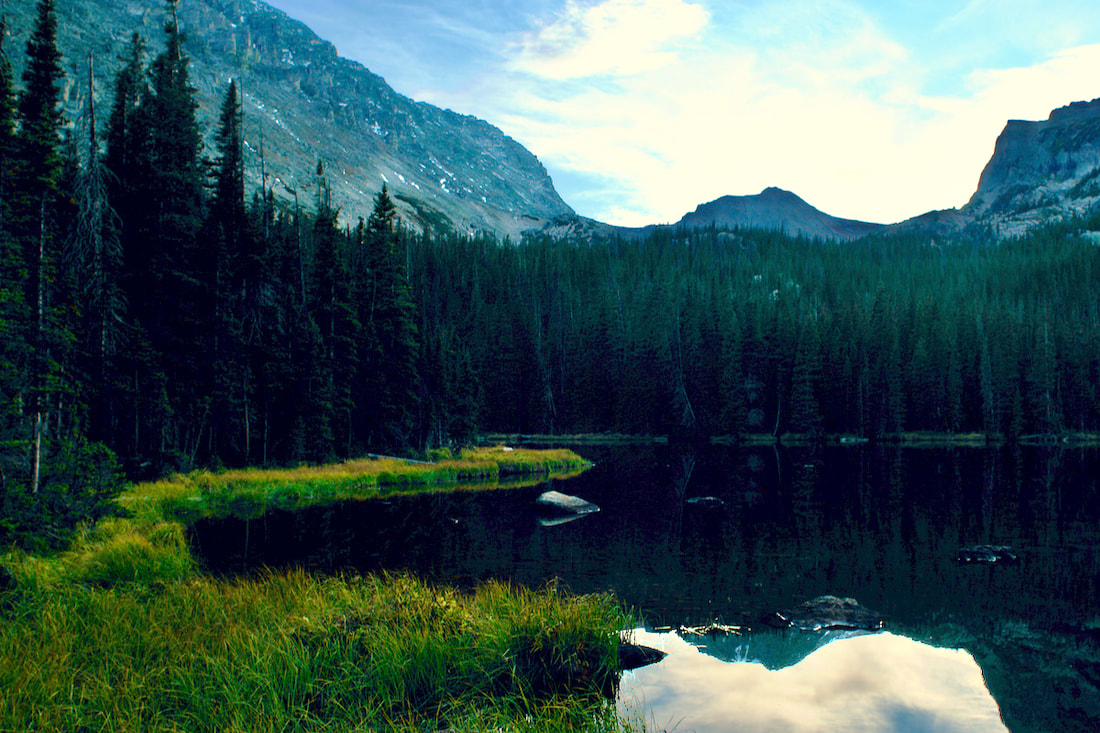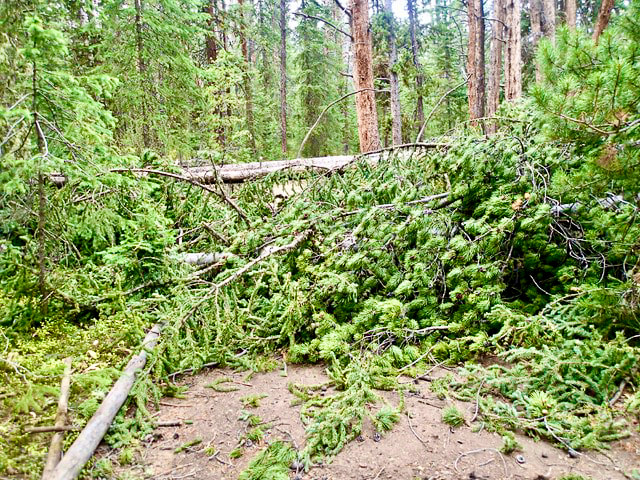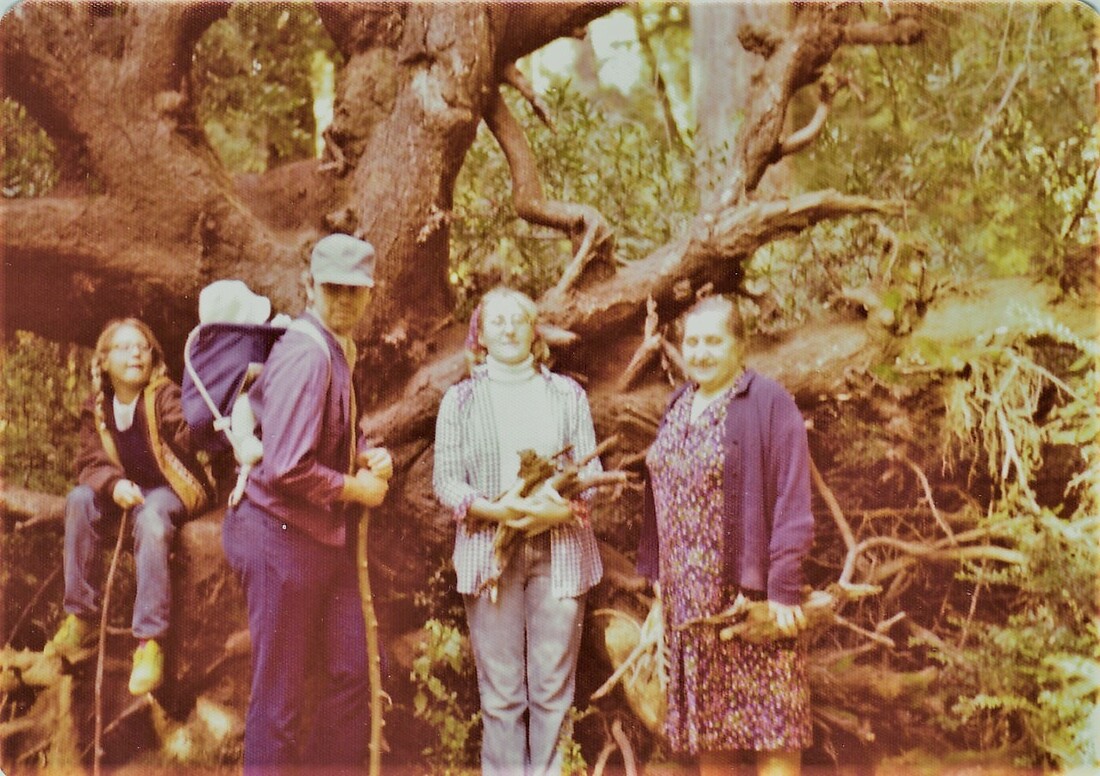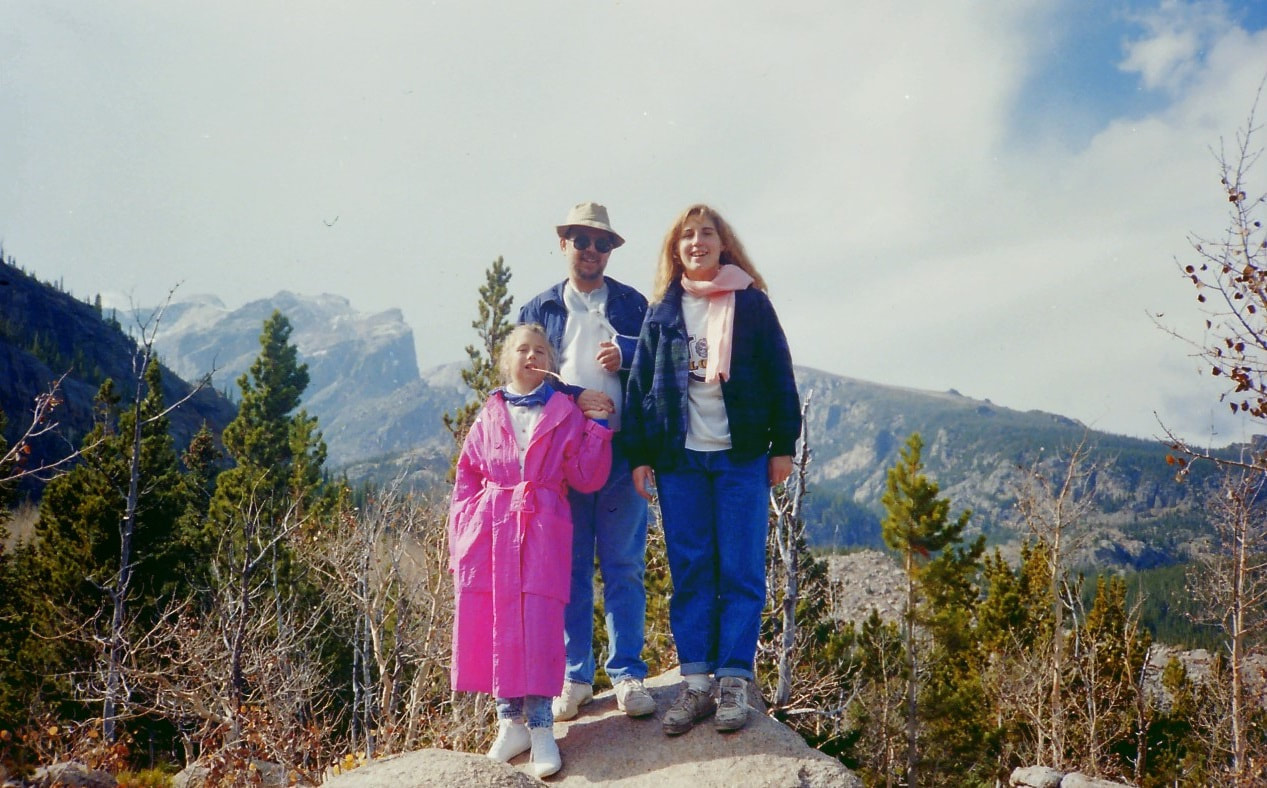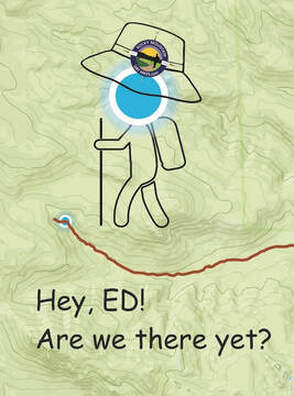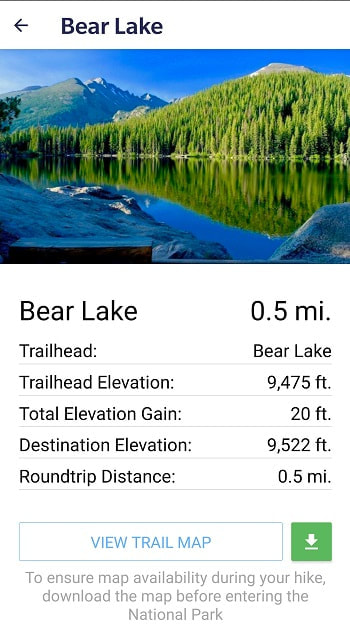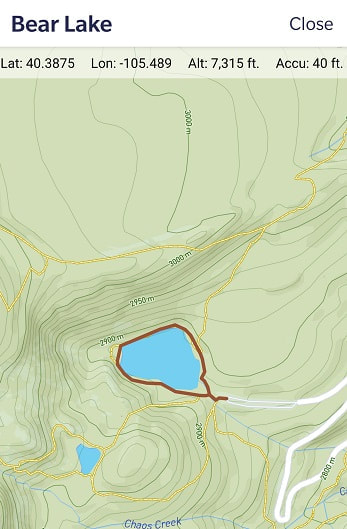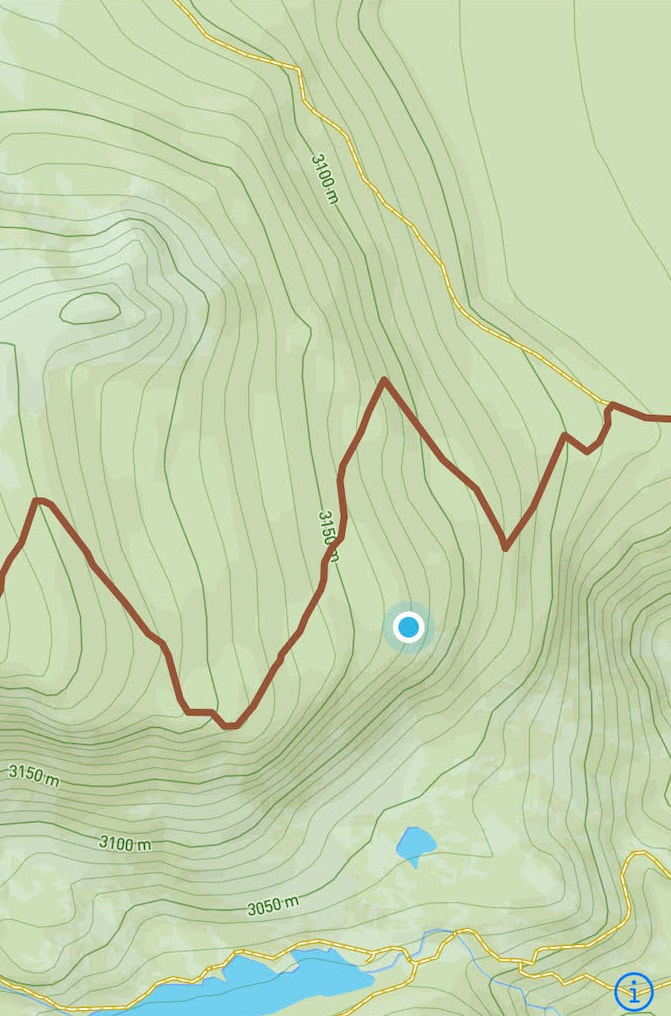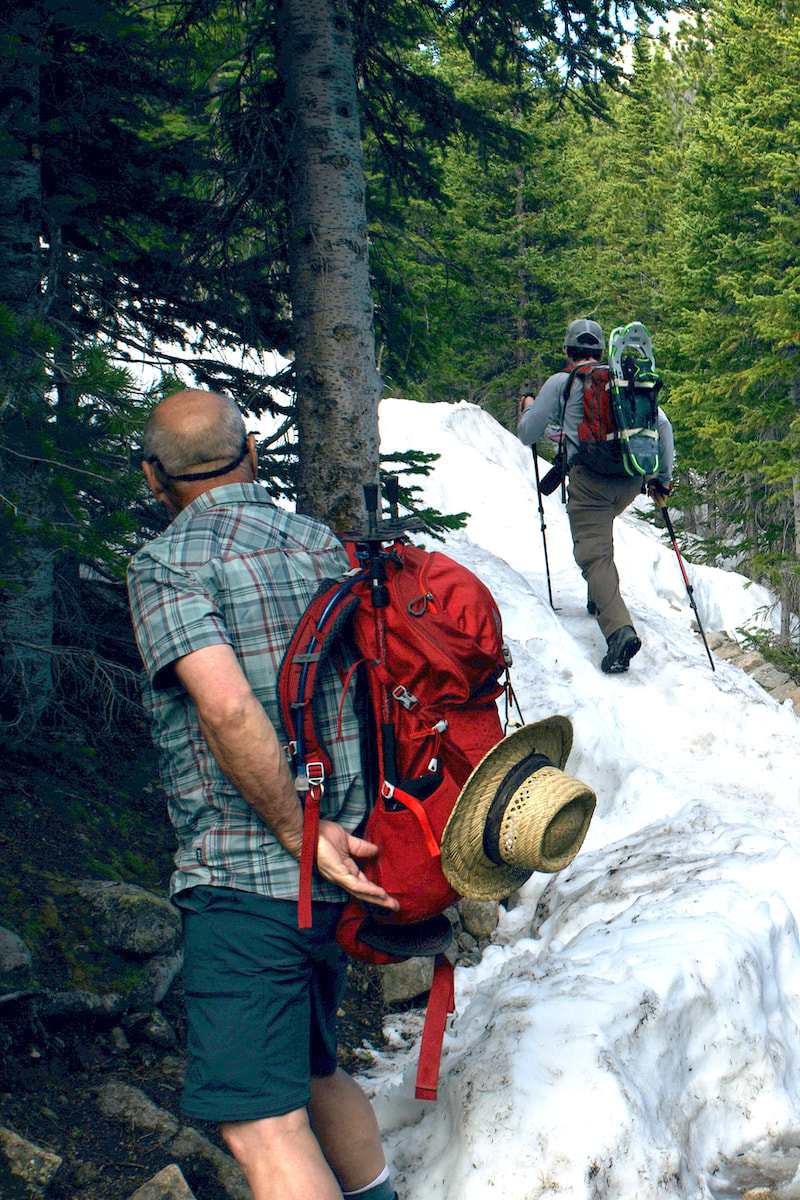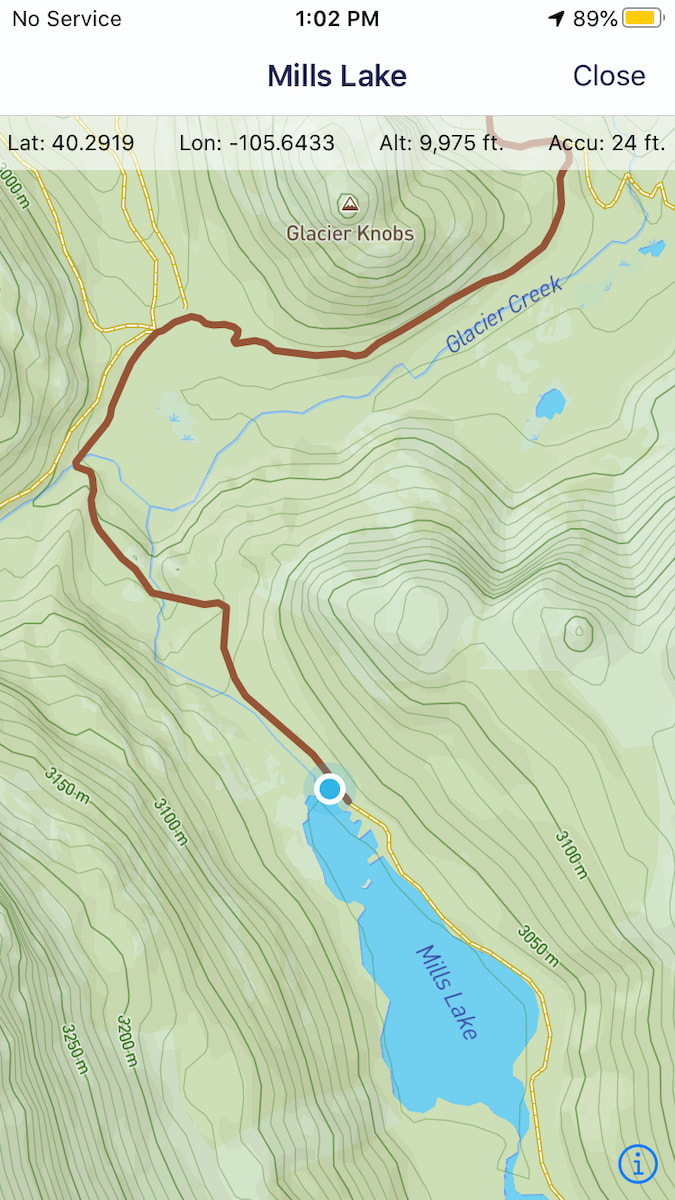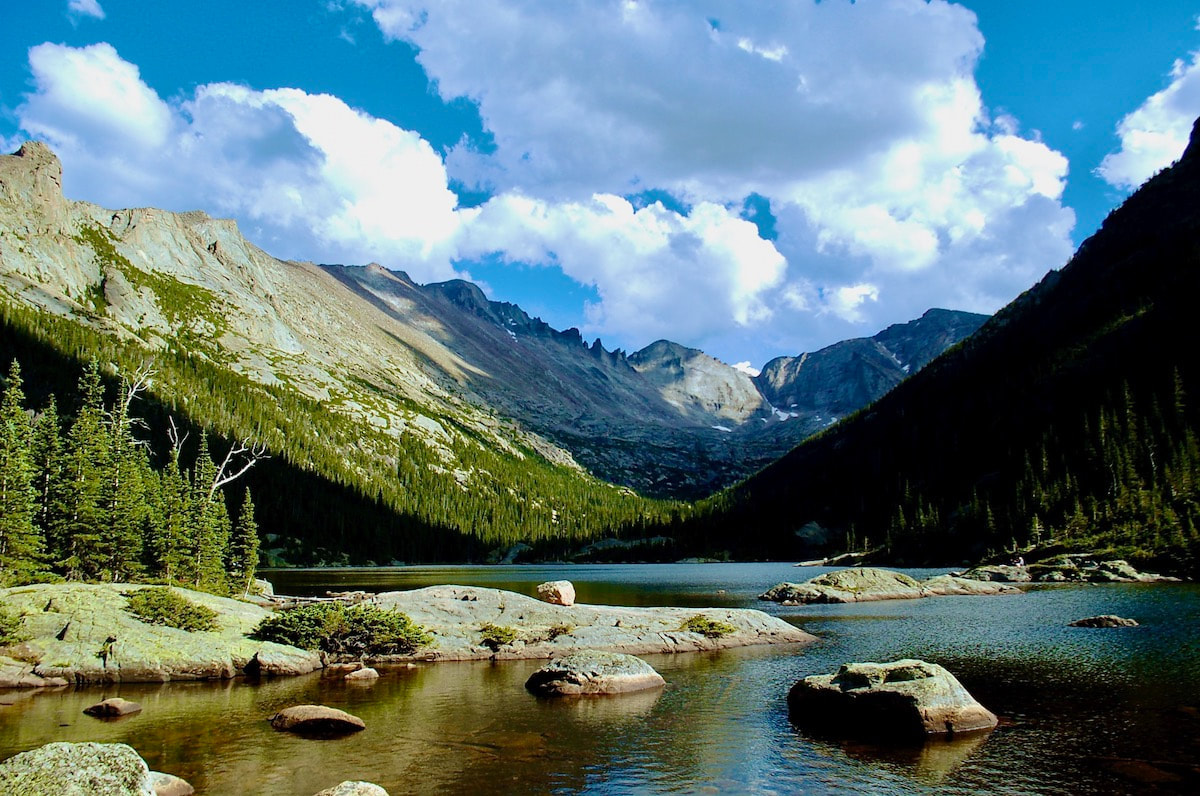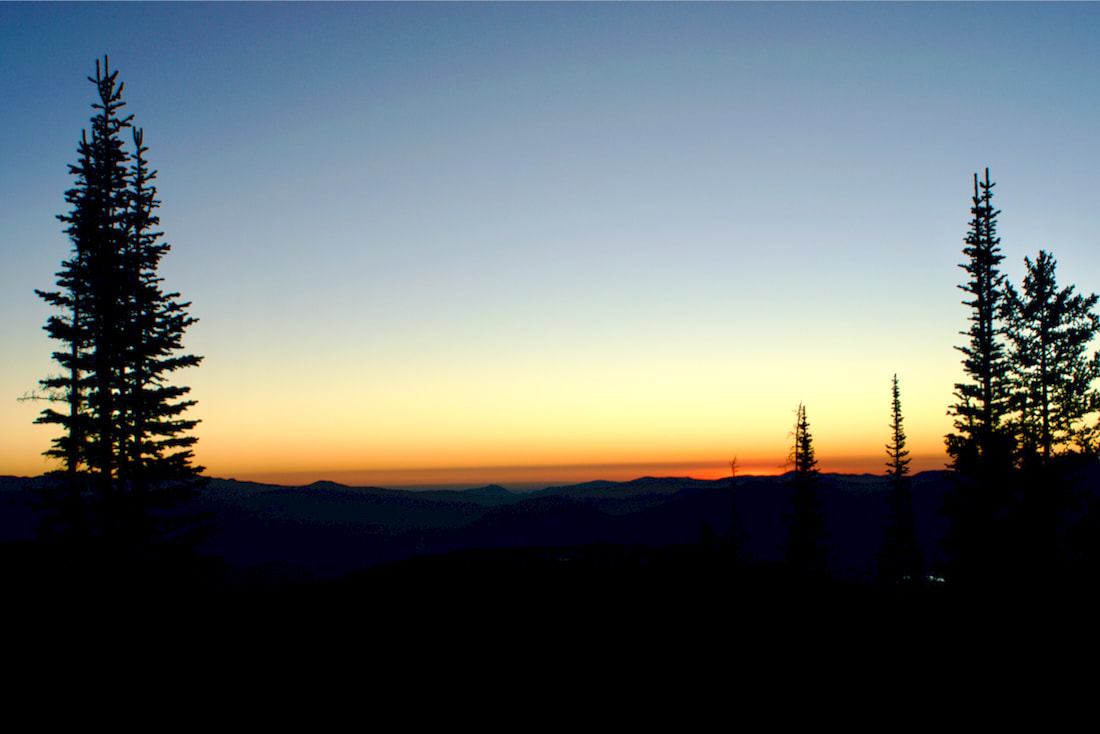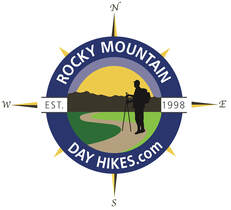|
Notes from the
Trail |
Hike Rocky Magazine articles
|
Trailhead: Wild Basin Trailhead Elevation: 8,500' Destination Elevation: 10,025' Elevation Gain: 1,525' Roundtrip Miles: 9.8 Recently, the Cameron Peak fire was blown into the northwest section of the Park. The devastation from that fire will be noticeable for many years to come. By taking a hike up to Ouzel Lake, we can imagine how things will look in that section of the Park in another 40 years. This last August marked the 42nd anniversary of the Ouzel Fire which started as a lightening strike in the southeast corner of the Park. Last week, on an afternoon when the fall colors were starting to come into their own, I ventured up the 4.9 miles to Ouzel Lake. It was a late day hike. I didn't leave the Wild Basin trailhead until almost 3:30 in the afternoon. I knew that by the time I walked the 4.9 miles to Ouzel Lake, it would be 6 or 6:30 and it would be dark by the time I returned to the lot, so I checked the batteries for my head lamp and threw that in the pack. The afternoon had clouded up and I encountered some rain on the drive south from Estes Park toward Wild Basin. But there was just occasional drizzle as I started my hike, not enough to get anything damp. Many of the aspen tree were still green, but those that had turned colors looked spectacular! As I hiked on, I wasn't too sure if the rain would pick back up, or would clear up. There wasn't a lot of water flowing down the Calypso Cascades when I crossed the bridges there and, knowing the water flow would be light, I went by the Ouzel Falls without much of a look there. My attention was mostly toward stopping to capture the fall colors as I quickly moved up the trail. I was glad to see the clouds breaking up once I hiked past Ouzel Falls. Sun was starting to get low on the western horizon when I reached the Bluebird Lake trail cutoff at just over 3 miles. The trail junction is in deep, dark forest being surrounded by tall spruce. But the trail quickly switchbacks up to the more open ridge that follows Ouzel Creek. This is where the hiker can best experience the 40 year natural restoration from the Ouzel Fire. I remember hiking this section of trail the summer after the fire in '79 and noticing how terrible things looked. It was a mostly barren landscape then. 40 years later, I could see the area was still a very long way from being fully recovered, but there was a healthy mix of aspen and spruce that were well on there way. Along this section of the trail, there were a few scattered dead trees that rose up over the new growth, ghostly remnants of the fire that sometimes gave the appearance of flames. One burned out log had fallen across the trail and I hoped the trail crews would leave it lay instead of cutting it up. I felt like it was an old soldier with the scars of battle showing. The fire opened the once forested ground to sunlight and part of the evolving ecological revegetation cycle allows for new plants and wildflowers to thrive. The late day sun made for good photography with long shadows and backlit leaves. But I knew I wouldn't have too much daylight left by the time I got to the lake. Fortunately, I was near the trail cutoff. There was just a little bit of daylight on the hillside as I approached the lake. Barely enough light to get some photographs if I hurried. I loved the orange tinged grass that highlighted the edge of the eastern shoreline The grassy shoreline was muddy and in places showed a little too much trampling from people walking around. I tried to step carefully so as to not contribute to the trampling. It took me two and a half hours to get to the lake, stopping for photographs along the way. I packed my camera into my day pack and left the lake at 6:30. It only took me an hour and a half to get back to the car. What a great hike!
0 Comments
Photos and story by Marlene M. Borneman “Autumn is a second spring when every leaf is a flower”---Albert Camus Every year I make the trek over the Continental Divide, 42 miles of which snakes through Rocky Mountain National park. There are several trails used to accomplish this mission but on Sunday of Labor Day weekend I chose to hike with three friends from Bear Lake to the Green Mountain Trailhead via the Tonahutu Trail, 15 miles one way. My husband was designated to pick us up at the destination trailhead. On a brisk, clear morning wearing headlamps, we started up Flattop Mountain Trail that connects with the Tonahutu. I started scouting for Blue Grouse, also called Dusky Grouse. These chicken-like birds live in subalpine areas this time of year. We were blessed with seeing several grouse foraging for seeds. The trail switchbacks in the subalpine forest gaining altitude above timberline to the alpine ecosystem. The trail becomes more rocky and steeper. The summit of Flattop, 12,324 feet, is always perfect for a second breakfast. Sweeping views of the Never Summer Range to the west were striking, but also melancholic as no winter snow was left, due to drought conditions.
Soon, we approached the intersection of the Tonahutu Trail and North Inlet Trail. We headed down the Tonahutu to the north and west over Ptarmigan Pass. Sightings of marmots, ptarmigans, and watching for elk and bighorn sheep absorbed us. Sweeping views appeared on a long switchback before dropping down. This section is wet and mossy as the beginnings of Tonahutu Creek; earlier in the season it is packed with wildflowers. I stopped to check on the vegetation and found a few star gentians still in bloom along with the tall and robust dense-flowered dock. Ah, the noise of Granite Falls can be heard before you see it. The water spilling over giant boulders with an invigorating spray makes for a picturesque spot for a break. There are many stream crossings on this portion of the trail and we stopped to soak our feet. I also wanted to photograph the seed heads of flowers which I find as attractive as the flowers in bloom. About two miles from our destination we came to Big Meadows from which the Tonahutu Creek snakes down all the way to Grand Lake and beyond. Tonahutu is an Arapaho word meaning “Big Meadow." There were no moose sightings that day, but they are often spotted here. The junction for Green Mountain Trail head came into view, we were only 1.9 miles to the awaiting car. But wait, what? Right then we got a text that the Park will be closing Trail Ridge Road at 3:00p.m due to heavy smoke from the Cameron Fire to the north. This was to be our route on the drive back to Estes Park! I checked the time - 2:45p.m. - and we hiked out a little unsettled thinking about the four-hour ride back, which usually takes 45-minutes when Trail Ridge Road is open (it has since reopened). We happily agreed to relish our day, including the long ride home. BE PREPARED you never know what will happen in the mountains. OPTIONS If you still feel ambitious after hiking over from Bear Lake instead of heading to the Green Mountain Trail Head, you can continue south along Big Meadows on the well maintained Tonahutu trail to Grand Lake. Here the Tonahutu Creek snakes down all the way to Grand Lake and beyond. This adds another 4.5 miles. This section is very showy in autumn with golden grasses, shrubs in red colors, lodgepole pine forests, gold aspens, and the chance of wildlife sightings. Encounter a little history by passing the Harbison Ditch as it no doubt helped irrigate the Harbison sisters homestead in 1895. Another option I have taken for a mellow day hike, not involving crossing the Continental Divide, is to hike this section as a 5.8-mile one-way hike with a car shuttle starting at Green Mountain Trail Head ending at either the Kaweeneche Visitor Center or Grand Lake. Or approximately 12 miles round trip. The entire way hiking is in rhythm with Tonahutu creek. The possibilities in Rocky are endless. NOTE: Last week I hiked Tonaahutu Creek./Big Meadows trail to Grand lake from Green Mountain Trailhead and back. Earlier in the week there was an “wind event” resulting in MANY down trees across the trail. The downfall increases the difficulty of hiking this section. Be sure to appreciate trail crews as they are working on clearing these trails. By Barb Boyer Buck Ever since I was a kid, hiking with my family in the mountains of Northern California and later in Colorado's high country, I remember the refrain: "Hey, Pop! Are we there yet?" My brother, sister, and I echoed this sentiment on all long hikes, even if we were enjoying ourselves. It became a habit. My dad would bend down, circle one arm around my shoulder and point to where the trail rounded a bend, traveling out of sight. "Just around that ridge," he would say. Most of the time, there was another ridge beyond that one… and another ... and another. When we were tired this was frustrating, but these days I understand why my dad did that. We had to keep going forward to reach our goal and he was trying to keep our spirits up.
Add to that the spotty and/or non-existent phone coverage in RMNP and the danger increases. Rocky Mountain Day Hikes has developed a free app for smart phones (either Apple or Android) called GPSmyhike to help with these concerns.
The downloaded topographic trail map indicates the trail with a red line and a moving blue dot (which we've named ED) tells you exactly where you are at any point along your hike. RMDH founder and app developer Dave Rusk had an opportunity to test the app's efficacy in early June, while hiking the Flattop Mountain Trail. Portions of the trail were covered in snow and it quickly became unclear where it went. "Even if there are tracks in the snow, it doesn't mean that it's the actual trail," Dave said. GPSmyhike helped him to find the trail which he & his hiking partner had wandered away from. Read his report of that hike here. Once you've downloaded the map, ED will appear anywhere you are! Even if you are off the trail, even if you have downloaded a map for a different hike altogether. Zoom out on any trail map you've downloaded and ED will tell you exactly where you are! ED always answers the question "are we there yet?" Have you tried out the app? We would love to hear about your experiences and perhaps see some app screenshots paired with actual photos of the location ED indicated you were. Submit these photos to [email protected] and we may use them in a future piece! Trailhead: Bear Lake Trailhead Elevation: 9,475' Destination Elevation: 13,208' Elevation Gain: 3,733' Roundtrip Miles: 16 This hike was done several weeks ago, on September 2. Before the area received several days of hot, dry winds that blew up the Cameron Peak fire and eventually closed Trail Ridge Road due to heavy smoke conditions. And before the dramatic change in the weather that dropped temperatures by nearly 50 degrees overnight and kept Trail Ridge Road closed for many more days with as much as 16" of snow. Conditions can change very quickly in the mountains. I left the Bear Lake parking in the dark with other hikers wearing headlamps to see their way on the trail. My destination on this day was Powell Peak via the Flattop Mtn trail and across the tundra, rounding the backside of the many peaks that make up The Front Range. Because of the extended amount of time cruising above treeline, it was important that there was a zero percent chance of thunderstorms in the forcast. I started up the Flattop Mtn trail like a race horse out of the starting gate, but then settled into a steady pace as I rose in elevation with the sun.
I worked my way around the western flank of Hallett Peak until I could see Longs Peak and Taylor Peak, two prominent landmarks. I needed to go around Taylor Peak to get to Powell Peak, so I headed for a low spot to the right of Taylor and kept that spot in my sights while I navigated the terrain. After passing Otis Peak, a visible trail appeared that led to the top of Andrews Glacier. I took a peek down to The Loch Vale before continuing on my tundra traverse.
Once I reached the high point on the shoulder of Taylor Peak, I found I was still not far enough around to see my direction to Powell Peak yet. But I was able to see across the valley to the southwest at the dramatic range, with Andrews Peak to the the left and Ptarmigan Mtn to the right, and I could also see the two lakes, Nakoni and Nanita, that sit below them. The actual summit of Powell Peak is hard to make out. It is not as prominent as many of the other surrounding peaks are, especially from the back side. And because of the rising elevations, some things are hidden. I kept an eye on a really prominent peak which at first I thought was neighboring McHenrys Peak. But later I realized that Powell Peak was hiding McHenrys Peak and what I was looking at all along was Chiefs Head Peak. It wasn't until I was on the actual summit of Powell Peak that I realized my error. Right in front of me, sticking up like a sore thumb, was the backside of McHenrys Peak between Longs Peak and Chiefs Head Peak behind it. The topography can be confusing, and very dramatic when trekking across the tundra. At 13,208 ft, Powell Peak is slightly lower than McHenrys Peak by only 19ft, but higher than the more prominent Taylor Peak by 55ft. But the distance to get to Powell Peak is considerable, and I began to make my way back. It took me six hours to reach the summit of Powell Peak from the Bear Lake Parking lot, but only four and a half hours on the return. |
"The wild requires that we learn the terrain, nod to all the plants and animals and birds, ford the streams and cross the ridges, and tell a good story when we get back home." ~ Gary Snyder
Categories
All
“Hiking -I don’t like either the word or the thing. People ought to saunter in the mountains - not hike! Do you know the origin of the word ‘saunter?’ It’s a beautiful word. Away back in the Middle Ages people used to go on pilgrimages to the Holy Land, and when people in the villages through which they passed asked where they were going, they would reply, A la sainte terre,’ ‘To the Holy Land.’ And so they became known as sainte-terre-ers or saunterers. Now these mountains are our Holy Land, and we ought to saunter through them reverently, not ‘hike’ through them.” ~ John Muir |
© Copyright 2025 Barefoot Publications, All Rights Reserved

